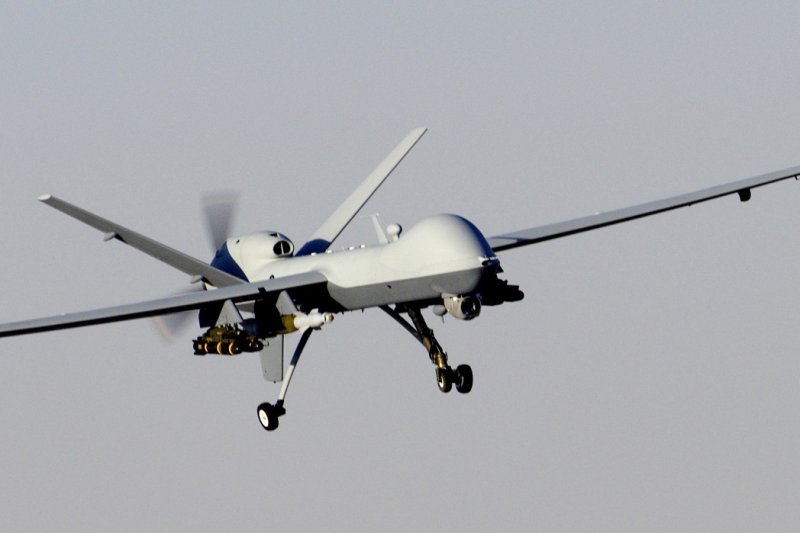An Air Force MQ-9 Reaper unmanned aerial attack vehicle prepares to land after a mission in support of Operation Enduring Freedom in Afghanistan on November 27, 2009. File Photo UPI/Brian Ferguson/U.S. Air Force |
License Photo
Nov. 20 (UPI) -- General Atomics Aeronautical Systems will begin negotiations with Belgium following approval of the sale of MQ-9B SkyGuardian unmanned aerial vehicles, the company said.
"We look forward to providing our unmanned aircraft systems to meet Belgium's mission requirements, while also supporting the NATO Alliance," CEO of GA-ASI Linden Blue said in a statement.
"We are also eager to work with our industrial partners in Belgium on a host of activities ranging from manufacturing to maintenance"
The MQ-9B SkyGuardian, also known as the Reaper, is a much larger and heavily armed successor to the MQ-1 Predator drone. It is designed primarily for attack missions but can also be used for surveillance, close air support, and reconnaissance missions.
It has long-range endurance and carries the advanced Multi-Spectral Targeting System. Its suite includes infrared cameras, laser designators, and video systems. It has satellite uplink/downlink capabilities that allow its sensor data to be shared across networks.
It has a a high cruise speed, a flight ceiling up to 40,000 feet, long range, and can carry a much larger payload than its predecessors. They can carry Hellfire laser-guided missiles, GBU-12 Paveway bombs, and GPS-guided GBU-38 Joint Direct Attack Munitions.
The U.K. Royal Air Force has also invested heavily in the MQ-9B, with a upgraded version of the platform being developed for the RAF with longer range and greater weapons payload that is expected to be delivered by 2021.















